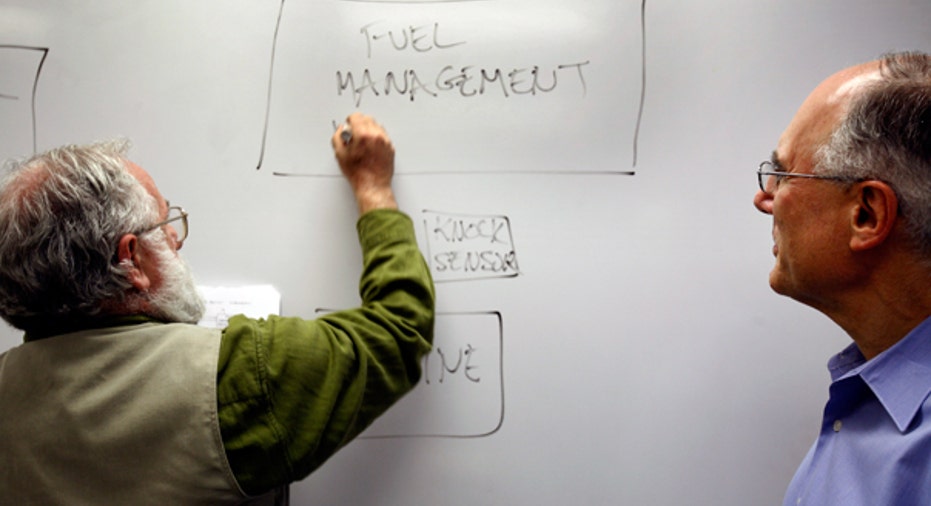Avoid the Pitfalls of Taking on Too Much, Too Soon

Entrepreneurs are dreamers; their vision is often a grand one. It can be their greatest strength and, at times, their unwitting downfall.
"The vision of a new business owner is usually too broad," said Dan Murphy, founder and president of The Growth Coach, a nationwide business coaching franchise. "They lack some clarity and direction and end up wasting two of their key resources: time and energy."
Overly ambitious entrepreneurs can also run out of money trying to take on everything at once -- and burn themselves out in the process. To avoid this trap, consider the pitfalls of two entrepreneurs who struggled by starting out too broad, then refocused to find success.
Take One Target at a Time
When Mindy Berkson started an infertility consulting firm, Lotus Blossom Consulting in Chicago in late 2005, she thought her unique perspective provided an edge. She had a venture-capital background, previous experience recruiting surrogates and egg donors, and first-hand knowledge of her target market; she had sought out fertility treatment herself in the '90s, when she expanded her family.
But even armed with this experience, Berkson made the common misstep of many new business owners: starting too broad too soon.
"I was marketing to just women over 35 and it wasn't specific enough," Berkson said.
Although she managed to break even in her first year, she wasn't making money and something had to give. "As a single business owner, I recognized it's impossible to focus on everything," she says, "it's too much and you just don't do it effectively."
So, the following year, she narrowed her market to professional women's groups, then specifically overweight women. Once she gained traction, gay men became her next niche market, then slowly followed by international clientele.
Berkson scheduled speaking engagements in her target areas and began networking with adoption attorneys, physicians, financial and estate planners and licensed insurance agents -- all of whom became referral sources.
"When I started to hone in on those specific groups and make alliances, I really started to see an increase in my business," Berkson said.
Don't Spend Too Much, Too Soon
Entrepreneur Rick Platt firmly believed he was going to launch the first-ever 3-D sport on a trampoline-walled playing field. His grandiose convictions were so strong in 2003, he was willing to spend millions of his own money -- and that of his family and friends.
It took him six months just to build a patented trampoline "field," another year to create the new "3-D" sport that combined elements of numerous games ranging from football to hockey. Then there was the testing phase that included reaching out to more than 500 athletes.
"We burned through money without any money coming in for nearly two years," Platt recalls.He slowly began to realize that introducing a brand-new sport to the world was becoming too difficult, and far too costly. At the same time, during the summer of 2004, the kids at the skate park next door starting clamoring to jump on the trampoline field at his center in Las Vegas. Platt saw a narrower, but more profitable, business opportunity.
He started charging by the hour for people to come in and jump, then added kid's birthday parties and fitness classes on the trampolines; Sky Zone Recreational Centers was born. In fact, Platt could hardly keep up with the demand. The first month drew 800 trampoline-jumpers -- and that doubled the following month. By August, Platt cobbled together a low-budget television commercial.
"Literally within five minutes [of the commercial airing] our phones started ringing," says Platt, noting that about 10,000 people visited the center that month, and by year's end that figure increased tenfold.
In 2009, Platt turned Sky Zone Recreational Centers into a franchise; the first five franchisees are expected to open this year and next. Platt also currently operates three company-owned locations with annual revenues now topping $3 million.
Ask the Right Questions
Meanwhile, Berkson's turnaround moment arrived after a daunting first year, when she went back to the people she respected in venture capital to ask for help. She had gone to them before, but now realized she asked the wrong questions.
"My first question had been: Do you like the look of my brochure?" Berkson says. "But It wasn't about the brochure, it was really about building strong strategic alliances."
Once focused on the right questions, Berkson's mentors helped her define specific targets and set parameters around each one.
"For example, if in such-and-such timeframe an opportunity didn't pan out, I would ask myself how much money and effort I'm willing to throw at it before turning to a different opportunity," says Berkson, noting that her firm's revenues topped $300,000 last year and continue to grow. "I made drastic changes [in the second year] and I've been profitable every year since."



















